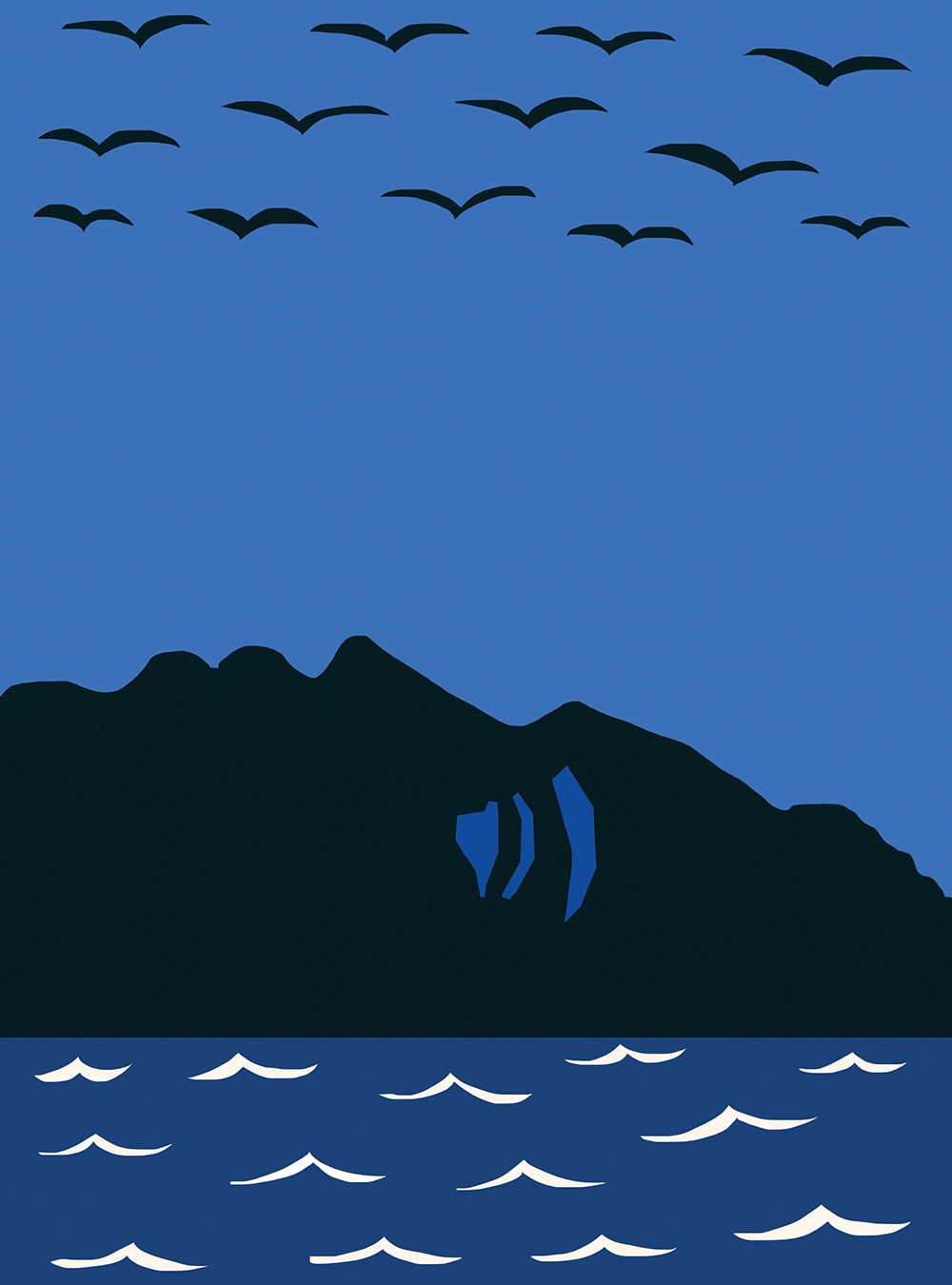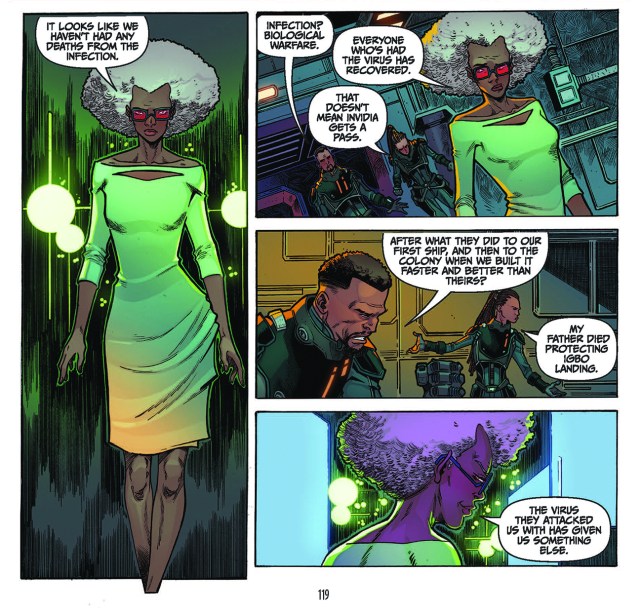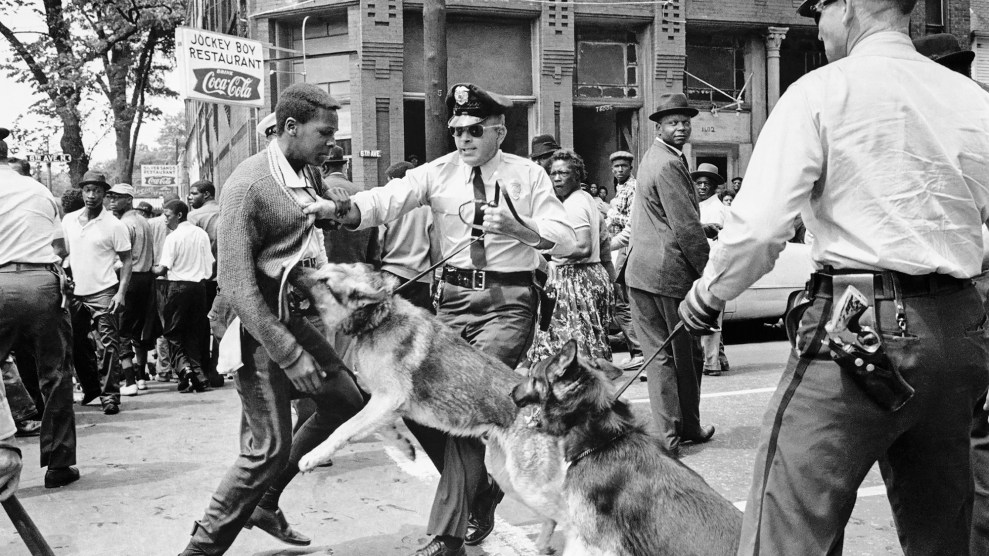Dunbar creek is a narrow, unassuming strip of water that winds through the north side of Georgia’s St. Simons Island. People drive over it daily via a narrow causeway, some on their way to the lavish Sea Island Resort. In the daytime, the water is so murky that the depth is impossible to gauge. At night, the water is indistinguishable from the land. In that darkness, some residents claim, they have heard chains rattling—the last remnant of a people who flew.
In 1803, 75 West Africans, many of them Igbo people from what is now Nigeria, were sold for $100 each to John Couper and Thomas Spalding. They were packed like cargo onto the slave ship the Morovia (or the York; accounts vary). Their fate was excruciatingly obvious, and the only answer was a rebellion. The Igbo overpowered the ship’s captain and killed some of his crew, and the ship ran aground in Dunbar Creek.
The Igbo made a conscious decision. They knew that a life of agony and horror awaited them, so they decided to walk into the water. In most oral retellings of what happened, they sang, “By the water spirits we came and by the water spirits we will be taken home,” as they walked into the creek, still chained to each other. “You cannot be an enemy of the land you are a part of.” It’s unknown how many people drowned and how many were recaptured; the bodies of 10 to 12 Igbos and three white captors were reportedly recovered from Dunbar Creek, according to contemporaneous documents held by the Coastal Georgia Historical Society.
This event, called Igbo (also Ebo/Ibo) Landing, has birthed two versions of a legend: the Flying African and those who walked into the water. Did they vanish into the sky or into the water? In any case, the Igbo exposed how the choice between enslavement and death was an obvious one; it’s why they faced death. The legend continues to inspire artists, writers, and filmmakers.
Igbo Landing particularly resonates for the Black community. But the physical site has garnered little attention. Much of Dunbar Creek flows through private residential areas, and Glynn County’s wastewater plant lies just down the creek. No permanent marker commemorating the uprising exists on the banks of the creek, nor anywhere else on St. Simons Island. What will it take for the departed to finally be enshrined?

One of the first preserved retellings of the oral tradition of Igbo Landing emerged in Drums and Shadows, a publication from the Georgia Writers’ Project, an effort funded by the Works Progress Administration in 1940 to record the state’s cultural history. St. Simons resident Floyd White, who spoke the language Gullah/Geechee, created by the descendants of West Africans in the area, recounted the legend in an interview transcribed for the book:
“Heahd bout duh Ibo’s Landing?” That was the place where they brought the Igbos over in the slave ship, he explained in the interview. And when they got there, they didn’t like it, so they all started singing and marched right down in the river back to Africa, but they weren’t able to get there. They drowned.
Though historical evidence, including letters written by slave traders, suggests the Igbo did indeed walk into the creek, their escape soon became woven into folklore about flight. “Some watching said that they flew home,” says Marquetta Goodwine, known as Queen Quet, chieftess of the Gullah/Geechee today.
The Flying African can be found in many legends of the diaspora, as Gay Wilentz writes in If You Surrender to the Air: Folk Legends of Flight and Resistance in African American Literature. Wilentz identifies two popular versions of the Flying African myth: one in which the enslaved Africans are guided back to Africa by a shaman, and the other in which enslaved Africans coming to shore “take one look at their future, turn around, and fly back over the ocean.” Wilentz notes that “the people who have the power to fly are most often identified in this version of the tale as Igbos from eastern Nigeria.”
Toni Morrison wrote perhaps the most famous work inspired by the Flying African, her 1977 masterpiece Song of Solomon. The novel follows Macon “Milkman” Dead as he attempts to trace his family heritage and ends with Milkman taking flight in what appears to be his last moments.
Most recently, Igbo Landing inspired Marlon Forrester’s new exhibit at the Institute of Contemporary Art in Boston. In his series of paintings If Black Saints Could Fly 23: si volare posset nigra XXIII sanctorum, the visual artist evokes the spirituality inherent in the legend, depicting saints with abstract wings against a blue background. “I immediately understood that their sacrifice was the ultimate example of freedom; the human ability to place the spiritual over the physical constraints of the body,” Forrester says.
Flight can be seen as “a collective symbol of resistance,” Wilentz explains. The same can be said of retellings of the legend wherein the Igbo chose to drown, which is echoed in the 2018 film Black Panther, when Killmonger says, “Bury me in the ocean with my ancestors that jumped from the ships because they knew death was better than bondage.”
It’s also echoed in the 2017 TV show American Gods. In the latter, demigod Mr. Nancy boards a ship with enslaved Africans and tells them a story about how “a man got fucked,” referencing how Black people got screwed over. At the end of his rousing speech, he implores them to take down those who had enslaved them.
One man pushes back: “But the ship will burn. All of us will die.”
“You already dead, asshole,” Mr. Nancy responds. “At least die a sacrifice for something worthwhile. Let the motherfucker burn.” And that’s exactly what they do: The enslaved people set the slave ship afire and go down with it.
When Nnamdi Kanaga, a filmmaker from Nigeria, learned that Song of Solomon was inspired by the myth, it led him to the Wikipedia page for Igbo Landing, where he learned the truth behind the story. “I felt some kind of courage,” he told me, but also felt “angry, sad, disappointed.”
Initially, Kanaga was hesitant to bring the Igbo Landing story to his mostly white community in Montana, where he now lives. Eventually, he felt he needed to “breathe life into these people.” Now he’s working on They Chose the Sea, a film he hopes will be completed in 2023.
Screenwriter and playwright Melody Cooper has known about Igbo Landing since her childhood, when her parents read her books like Virginia Hamilton’s iconic collection of folktales, The People Could Fly. When Cooper was asked to contribute to a 2021 anthology of all-Black comic creators called Noir Is the New Black, she decided to draw on the legend for a comic titled Igbo Landing.
“The way they rebelled was to take control of their fate,” Cooper says. In her short comic, Black people leave Earth in pursuit of a more sustainable future. They are said to be on a suicide mission—but they successfully inhabit another planet and name their colony Igbo Landing in honor of those lost in 1803. Against the backdrop of a feud with a group of white colonists who follow them and attempt to sabotage Igbo Landing, Cooper explores contemporary social issues through an Afrofuturistic lens.
Cooper cautions people not to jump to conclusions about the Igbo people’s decision. “We have to remember,” she said, “they come from a different culture. What ‘we’ call suicide, they may have seen as an honorable death.”

On July 22, 2017, Bobby Aniekwu, president of the Council of Igbo States in Americas, a cultural organization, stood on the banks of Dunbar Creek with Larry Hobbs, a reporter for the Brunswick News, and a group of elders from Nigeria.
They contemplated the lives lost there, and then partook in a ritual that many from the Black diaspora know well—they offered cognac and kola nuts to their lost ancestors, who died for something larger than themselves. They poured one out into Dunbar Creek and took swigs of cognac themselves. They were honoring the Igbos’ sacrifice and laying them to rest.
“Most Igbo today are Christian, a faith with an afterlife blending nicely with Igbo tribal assertion that those departed remain among us in spirit,” Hobbs wrote in the Brunswick News, adding, “That might perhaps explain local ghost stories over the generations of rattling chains and eerie chants emanating from the creek’s waters.”
“In Igbo land, the spirit does not rest,” Aniekwu later told me. “Death is a spirit leaving the body, wandering around on earth. It does not go home until its relatives give them the okay to go home.”
Similar ceremonies have been performed over the years, perhaps most notably by Queen Quet, the chieftess of the Gullah/Geechee. The Gullah/Geechee people are descended from enslaved Africans—including those of Igbo origin. They now live in scattered communities across the lowlands and barrier islands of the Southeast. Some of the Gullah live on Sapelo, one of the Sea Islands, in a town called Hog Hammock, which is listed as part of the US National Register of Historic Places.
But the Igbo Landing site isn’t on any historical register. I have lived in Glynn County and traveled that causeway, and I got married in the closest city of Brunswick. Yet until recently, I didn’t know about Igbo Landing. And how would I have, when the site is unprotected and access to the creek is restricted by private property?
“It truly is not recognized,” Queen Quet told me in an email. “If it were, it would be a site returned to the Gullah/Geechee Nation as a sacred space and not a private home location.”
In recent years, community members in Glynn County have been floating ideas for permanent markers to at least acknowledge that Igbo Landing took place. Cap Fendig, now in his third term as Glynn County’s District 2 commissioner, operates a tour company in the Sea Islands. He says telling untold stories—like that of Igbo Landing—is one of his main goals.
Fendig has his heart set on memorializing the site with a public park overlooking Dunbar Creek. And students at a nearby high school have successfully petitioned for a marker, set to be dedicated in May 2022. The only problem is, it won’t be on the creek. So far, homeowners have been reticent about having the memorial on their property.
But a growing number of residents, artists, and historians feel that Igbo Landing deserves a permanent memorial; if for nothing else because, says Cooper, “a lot of people don’t know the story.” Or, as painter Marlon Forrester puts it, “it is a key part of the story of the slave passage because it highlights black solidarity and resilience to oppression.”
There’s a reason you never learned about their story in school. As Queen Quet says, “That is the story that the colonizers did not want told.” The more people learn of Igbo Landing and attempt to commemorate it, the more the story seems to echo in the community—not just in art installations or ghost stories, but also in the death of Ahmaud Arbery, the 25-year-old Black man murdered just a dozen miles away. Another Black person denied the choice of a free life.
The Igbos showed that death from rebellion is better than a life of enslavement. They live on in that spirit of activism, in that choice. Resistance to oppressive systems should be celebrated. It is past time to give Igbo Landing the recognition it deserves.


















